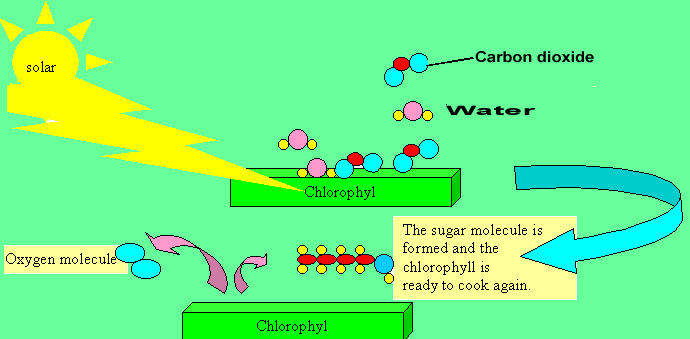Photosynthesis is a wonderful process that only plants can carry out. It is a process that gives us the energy to live and the oxygen to breathe. You see, plants are the only living organisms that can trap the sun's energy and make it into food for us. When a creature eats a plant it takes into its body the solar energy that was trapped by the plant
Plants trap the sun's energy in the food they produce for themselves. The solar energy is stored in this food as chemical energy. Chemical energy is the energy present in the chemicals that make up our food.
The
process of photosynthesis uses carbon dioxide, water and the sun's energy
to produce plant material. In this wonderful process oxygen is given out
by the plant as a waste product. Photosynthesis also mops up most of the
carbon dioxide we breathe out. Photosynthesis occurs in a plant cell with
the help of a special chemical called chlorophyll. Just imagine chlorophyll
as the cooking pot, while the carbon dioxide and water are the ingredients
that are cooked with the sun's energy. We can describe this reaction with
a simple equation.
Solar energy + Water +
carbon dioxide => sugar(plant food) + oxygen
The plant then joins the sugar molecules together to form
starch(food) and cellulose(building material). The chemical reaction that
joins all the sugar molecules together is called a polymerisation reaction.
